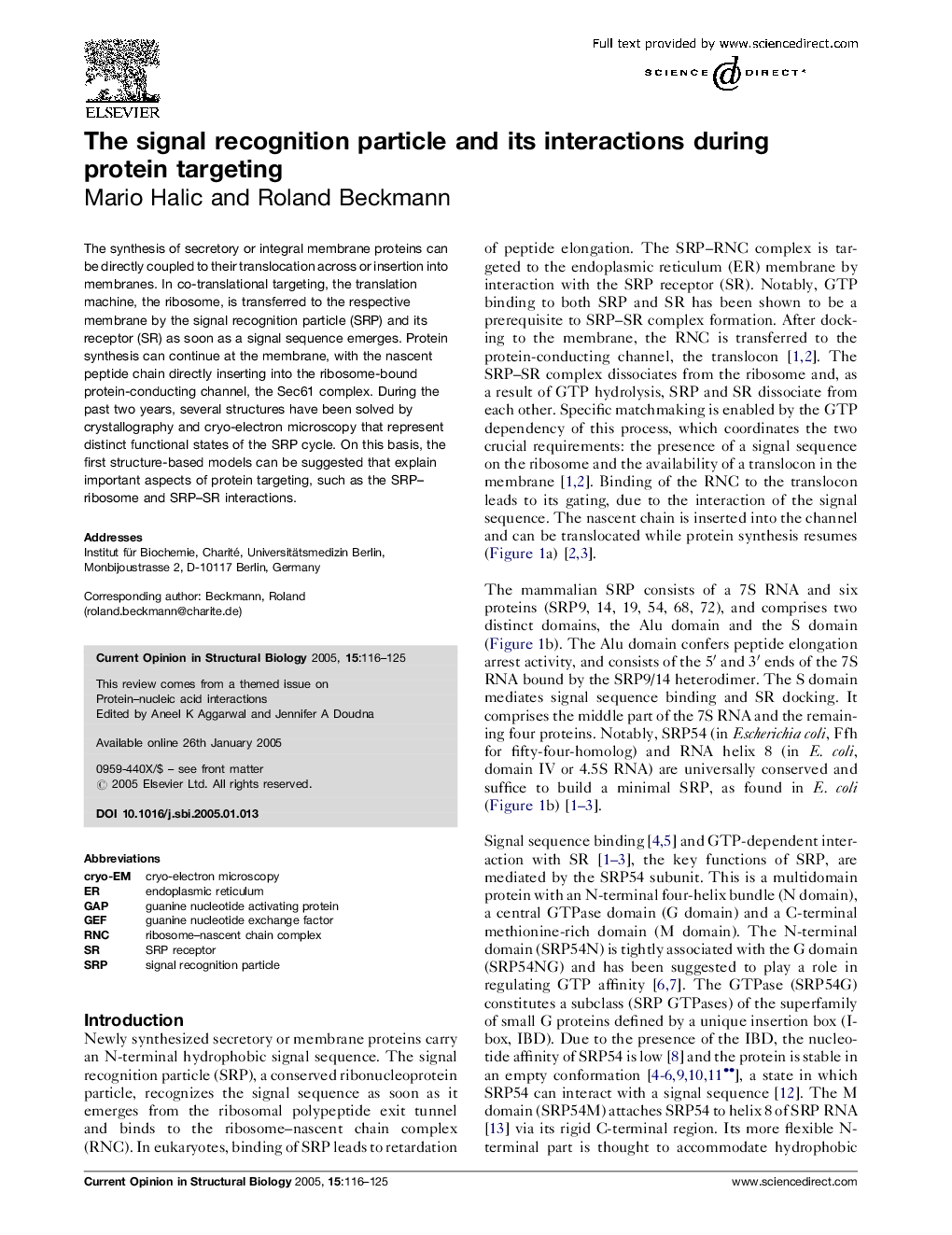| Article ID | Journal | Published Year | Pages | File Type |
|---|---|---|---|---|
| 10822891 | Current Opinion in Structural Biology | 2005 | 10 Pages |
Abstract
The synthesis of secretory or integral membrane proteins can be directly coupled to their translocation across or insertion into membranes. In co-translational targeting, the translation machine, the ribosome, is transferred to the respective membrane by the signal recognition particle (SRP) and its receptor (SR) as soon as a signal sequence emerges. Protein synthesis can continue at the membrane, with the nascent peptide chain directly inserting into the ribosome-bound protein-conducting channel, the Sec61 complex. During the past two years, several structures have been solved by crystallography and cryo-electron microscopy that represent distinct functional states of the SRP cycle. On this basis, the first structure-based models can be suggested that explain important aspects of protein targeting, such as the SRP-ribosome and SRP-SR interactions.
Keywords
Related Topics
Life Sciences
Biochemistry, Genetics and Molecular Biology
Biochemistry
Authors
Mario Halic, Roland Beckmann,
